RecipeIS—Recipe Recommendation System Based on Recognition of Food Ingredients
Abstract
1. Introduction
2. Related Works
- Research questions
- Inclusion criteria
- Research strategy
- Results
- Data extraction and analysis
- Discussion
- Question 1: Are there digital solutions that offer recipe proposals based on ingredient recognition or ingredient images?
- Question 2: What are the frameworks for ingredient recognition solutions?
- Question 3: Are there digital solutions for recipe proposals based on leftover meals to fight food waste?
- Criteria 1: Studies from 2014 to 2021;
- Criteria 2: Studies written in English;
- Criteria 3: Studies proposing recipes based on ingredients or on the recognition of ingredient images;
- Criteria 4: Studies about image recognition of food ingredients;
- Criteria 5: Studies where the full text is available.
- (a)
- Question 1: Are there digital solutions that offer recipe proposals based on ingredient recognition or ingredient images?
- (b)
- Question 2: What are the frameworks for ingredient recognition solutions?
- (c)
- Question 3: Are there digital solutions for recipe proposals based on leftover meals to fight food waste?
3. Materials and Methods
3.1. Proposed Model for Ingredient Identification
3.2. Dataset
- 36 classes of food ingredients;
- 3115 images in total;
- Fruit and vegetable images;
- Images in PNG image format;
- Different sizes and resolutions;
- Images with different angles, types of luminosity, and quality.
3.3. Results and Discussion
4. Deploying the Model
4.1. Workflow
4.2. Image Recognition
- Route 1: An index page that allows users to upload an image of the food ingredient, as shown in Figure 16.
- Route 2: A prediction page that recognizes the food ingredient image and sends it to the created model to determine the food ingredient class. This information is then returned to the webpage, as shown in Figure 17.
4.3. Recipe Recommendation System
5. Conclusions
Author Contributions
Funding
Institutional Review Board Statement
Informed Consent Statement
Data Availability Statement
Conflicts of Interest
References
- TensorFlow. Available online: https://www.tensorflow.org/ (accessed on 26 October 2022).
- Keras: The Python Deep Learning API. Available online: https://keras.io/ (accessed on 26 October 2022).
- NumPy. Available online: https://numpy.org/ (accessed on 26 October 2022).
- Page, M.J.; Moher, D.; Bossuyt, P.M.; Boutron, I.; Hoffmann, T.C.; Mulrow, C.D.; Shamseer, L.; Tetzlaff, J.M.; Akl, E.A.; Brennan, S.E.; et al. PRISMA 2020 explanation and elaboration: Updated guidance and exemplars for reporting systematic reviews. BMJ 2021, 372, n160. [Google Scholar] [CrossRef] [PubMed]
- IEEE Xplore. Available online: https://ieeexplore.ieee.org/Xplore/home.jsp (accessed on 26 October 2022).
- ACM Digital Library. Available online: https://dl.acm.org/ (accessed on 26 October 2022).
- ScienceDirect.com|Science, Health and Medical Journals, Full Text Articles and Books. Available online: https://www.sciencedirect.com/ (accessed on 26 October 2022).
- Yunus, R.; Arif, O.; Afzal, H.; Amjad, M.F.; Abbas, H.; Bokhari, H.N.; Haider, S.T.; Zafar, N.; Nawaz, R. A Framework to Estimate the Nutritional Value of Food in Real Time Using Deep Learning Techniques. IEEE Access 2019, 7, 2643–2652. [Google Scholar] [CrossRef]
- Chen, J.; Zhu, B.; Ngo, C.W.; Chua, T.S.; Jiang, Y.G. A Study of Multi-Task and Region-Wise Deep Learning for Food Ingredient Recognition. IEEE Trans. Image Process. 2021, 30, 1514–1526. [Google Scholar] [CrossRef] [PubMed]
- Pan, L.; Pouyanfar, S.; Chen, H.; Qin, J.; Chen, S.C. DeepFood: Automatic Multi-Class Classification of Food Ingredients Using Deep Learning. In Proceedings of the 2017 IEEE 3rd International Conference on Collaboration and Internet Computing, CIC 2017, San Jose, CA, USA, 15–17 October 2017; pp. 181–189. [Google Scholar] [CrossRef]
- Chu, W.T.; Lin, J.H. Food image description based on deep-based joint food category, ingredient, and cooking method recognition. In Proceedings of the 2017 IEEE International Conference on Multimedia and Expo Workshops, ICMEW 2017, Hong Kong, China, 10–14 July 2017; pp. 109–114. [Google Scholar] [CrossRef]
- Zhang, L.; Zhao, J.; Li, S.; Shi, B.; Duan, L.Y. From market to dish: Multi-ingredient image recognition for personalized recipe recommendation. In 2019 IEEE International Conference on Multimedia and Expo (ICME); IEEE: Manhattan, NY, USA, 2019; pp. 1252–1257. [Google Scholar] [CrossRef]
- Salvador, A.; Drozdzal, M.; Giro-I-Nieto, X.; Romero, A. Inverse cooking: Recipe generation from food images. In Proceedings of the IEEE Computer Society Conference on Computer Vision and Pattern Recognition, Long Beach, CA, USA, 15–20 June 2019; pp. 10445–10454. [Google Scholar] [CrossRef]
- Wang, H.; Sahoo, D.; Liu, C.; Lim, E.P.; Hoi, S.C.H. Learning cross-modal embeddings with adversarial networks for cooking recipes and food images. In Proceedings of the IEEE Computer Society Conference on Computer Vision and Pattern Recognition, Long Beach, CA, USA, 15–20 June 2019; pp. 11564–11573. [Google Scholar] [CrossRef]
- Jiang, S.; Min, W.; Liu, L.; Luo, Z. Multi-Scale Multi-View Deep Feature Aggregation for Food Recognition. IEEE Trans. Image Process. 2020, 29, 265–276. [Google Scholar] [CrossRef]
- Liang, H.; Wen, G.; Hu, Y.; Luo, M.; Yang, P.; Xu, Y. MVANet: Multi-Task Guided Multi-View Attention Network for Chinese Food Recognition. IEEE Trans. Multimed. 2021, 23, 3551–3561. [Google Scholar] [CrossRef]
- Chen, J.; Ngo, C.W. Deep-based ingredient recognition for cooking recipe retrieval. In Proceedings of the 24th ACM international conference on Multimedia, Amsterdam, The Netherlands, 15–19 October 2016; pp. 32–41. [Google Scholar] [CrossRef]
- An, Y.; Cao, Y.; Chen, J.; Ngo, C.W.; Jia, J.; Luan, H.; Chua, T.S. PIC2DISH: A customized cooking assistant system. In Proceedings of the 25th ACM International Conference on Multimedia, Mountain View, CA, USA, 23–27 October 2017; pp. 1269–1273. [Google Scholar] [CrossRef]
- Lim, H.; Huang, X.; Miller, S.; Edelmann, J.; Euken, T.; Voida, S. Smart Cook: Making cooking easier with multimodal learning. In Proceedings of the Adjunct Proceedings of the 2019 ACM International Joint Conference on Pervasive and Ubiquitous Computing and Proceedings of the 2019 ACM International Symposium on Wearable Computers, London, UK, 9–13 September 2019; pp. 129–132. [Google Scholar] [CrossRef]
- Zhu, B.; Ngo, C.W.; Chen, J.J. Cross-domain Cross-modal Food Transfer. In Proceedings of the 28th ACM International Conference on Multimedia, Seattle, WA, USA, 12–16 October 2020; pp. 3762–3770. [Google Scholar] [CrossRef]
- Peddi, S.V.B.; Kuhad, P.; Yassine, A.; Pouladzadeh, P.; Shirmohammadi, S.; Shirehjini, A.A.N. An intelligent cloud-based data processing broker for mobile e-health multimedia applications. Future Gener. Comput. Syst. 2017, 66, 71–86. [Google Scholar] [CrossRef]
- Kagaya, H.; Aizawa, K.; Ogawa, M. Food detection and recognition using convolutional neural network. In Proceedings of the 22nd ACM International Conference on Multimedia, Orlando, FL, USA, 3–7 November 2014; pp. 1085–1088. [Google Scholar] [CrossRef]
- Wang, W.; Duan, L.Y.; Jiang, H.; Jing, P.; Song, X.; Nie, L. Market2Dish: Health-aware Food Recommendation. ACM Trans. Multimed. Comput. Commun. Appl. (TOMM) 2021, 17, 33. [Google Scholar] [CrossRef]
- The Annotated ResNet-50. Explaining how ResNet-50 Works and Why it is so popular.|by Suvaditya Mukherjee|Towards Data Science. Available online: https://towardsdatascience.com/the-annotated-resnet-50-a6c536034758 (accessed on 31 October 2022).
- Understanding and Implementation of Residual Networks (ResNets)|by Raghunandepu|Analytics Vidhya|Medium. Available online: https://medium.com/analytics-vidhya/understanding-and-implementation-of-residual-networks-resnets-b80f9a507b9c (accessed on 31 October 2022).
- Intuitive Explanation of Skip Connections in Deep Learning|AI Summer. Available online: https://theaisummer.com/skip-connections/ (accessed on 31 October 2022).
- What is Anaconda?|Domino Data Science Dictionary. Available online: https://www.dominodatalab.com/data-science-dictionary/anaconda (accessed on 27 April 2023).
- Project Jupyter|Home. Available online: https://jupyter.org/ (accessed on 27 April 2023).
- What is Data Augmentation? Techniques & Examples in 2023. Available online: https://research.aimultiple.com/data-augmentation/ (accessed on 27 April 2023).
- Edamam—Food Database API, Nutrition API and Recipe API. Available online: https://www.edamam.com/ (accessed on 26 October 2022).

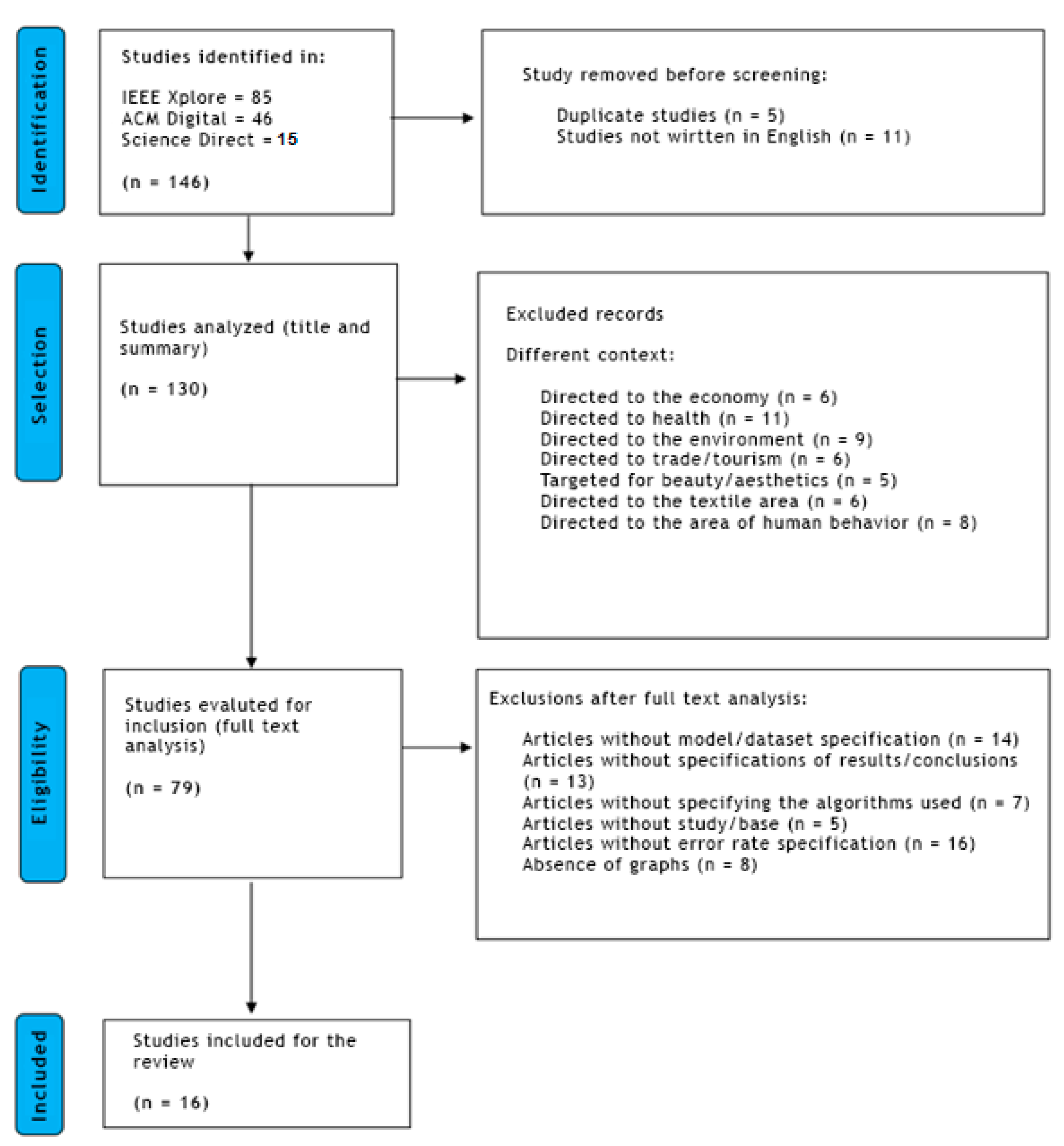
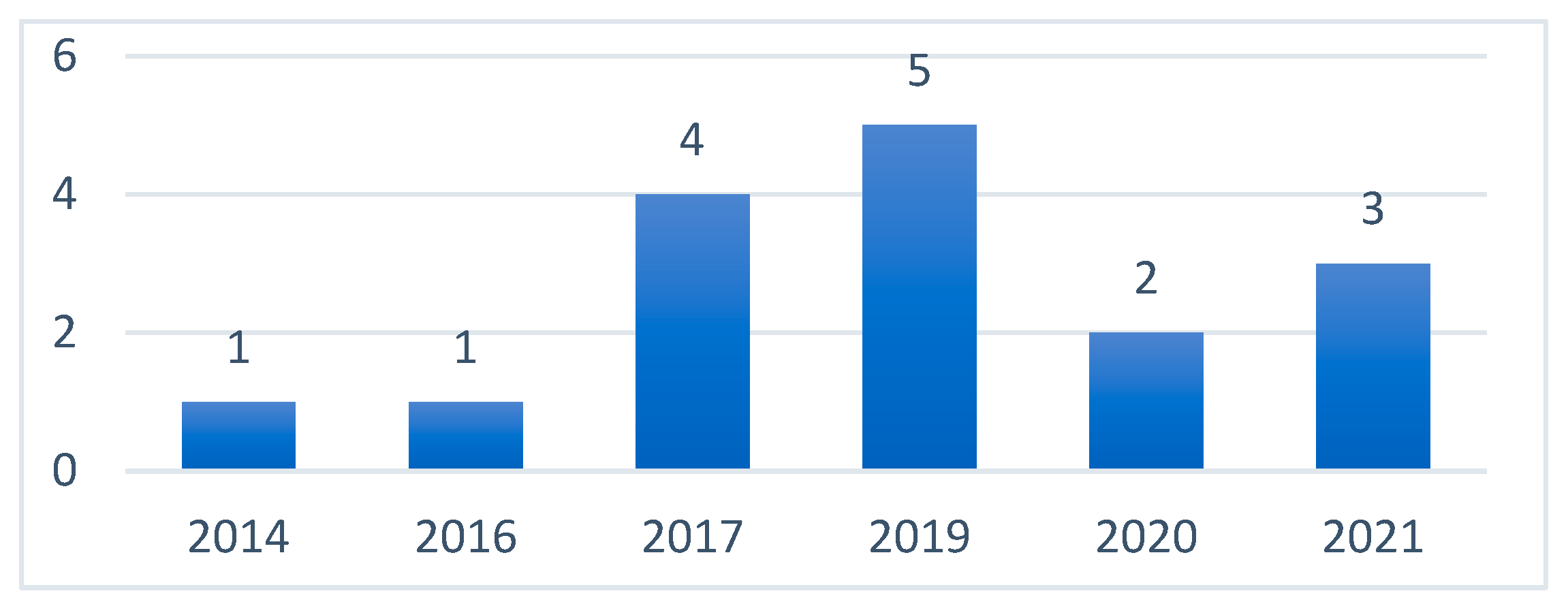
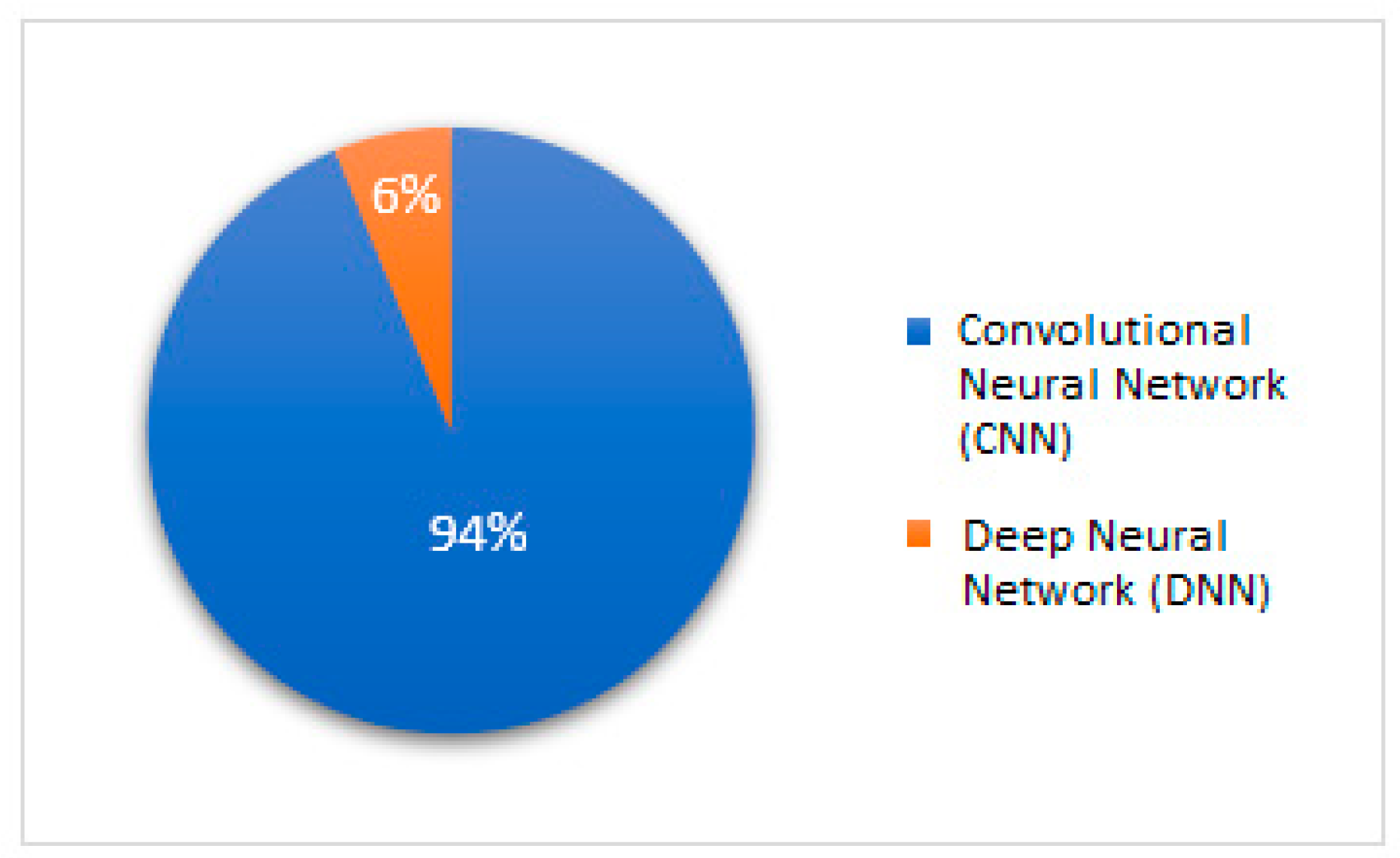

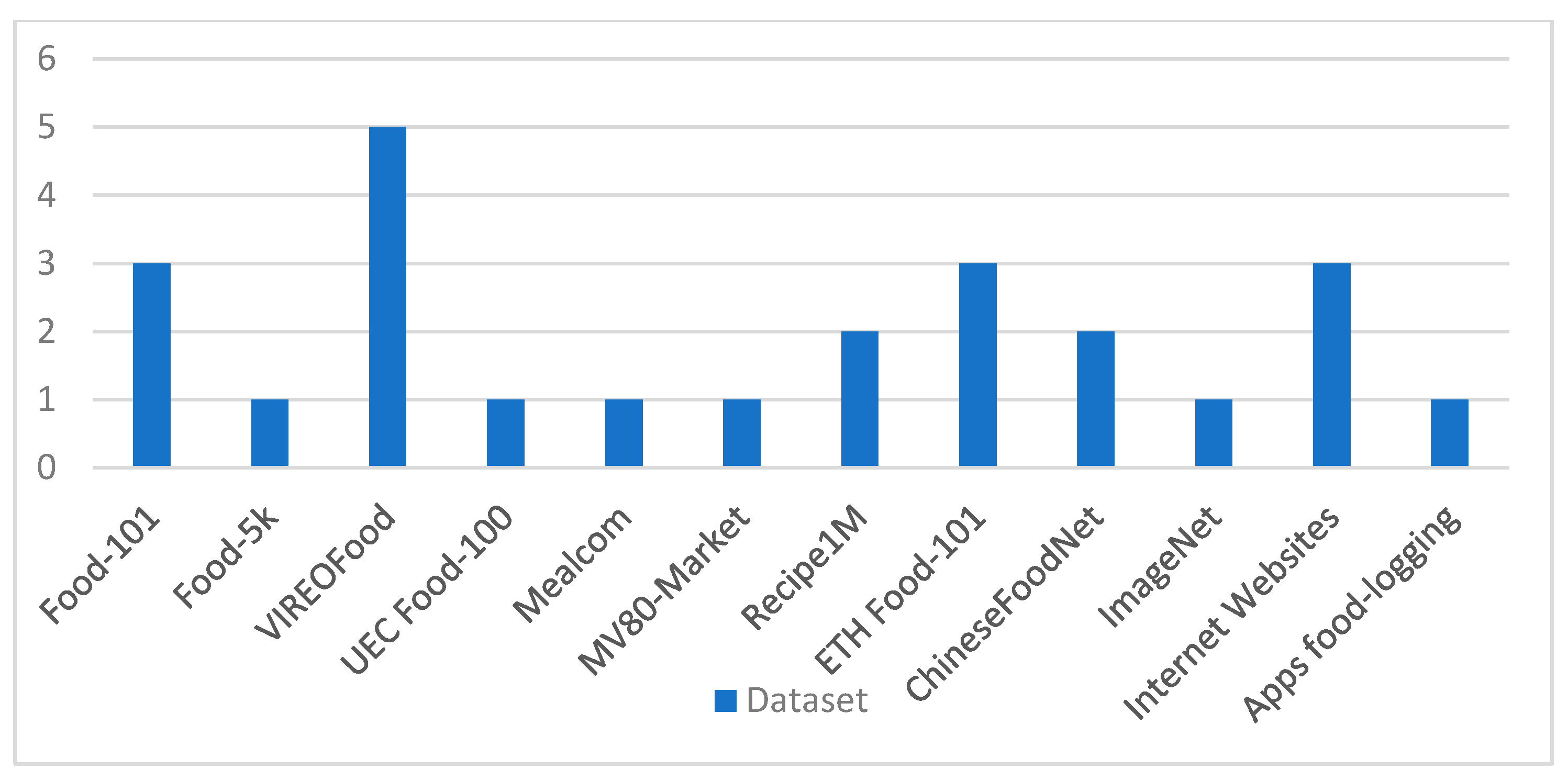
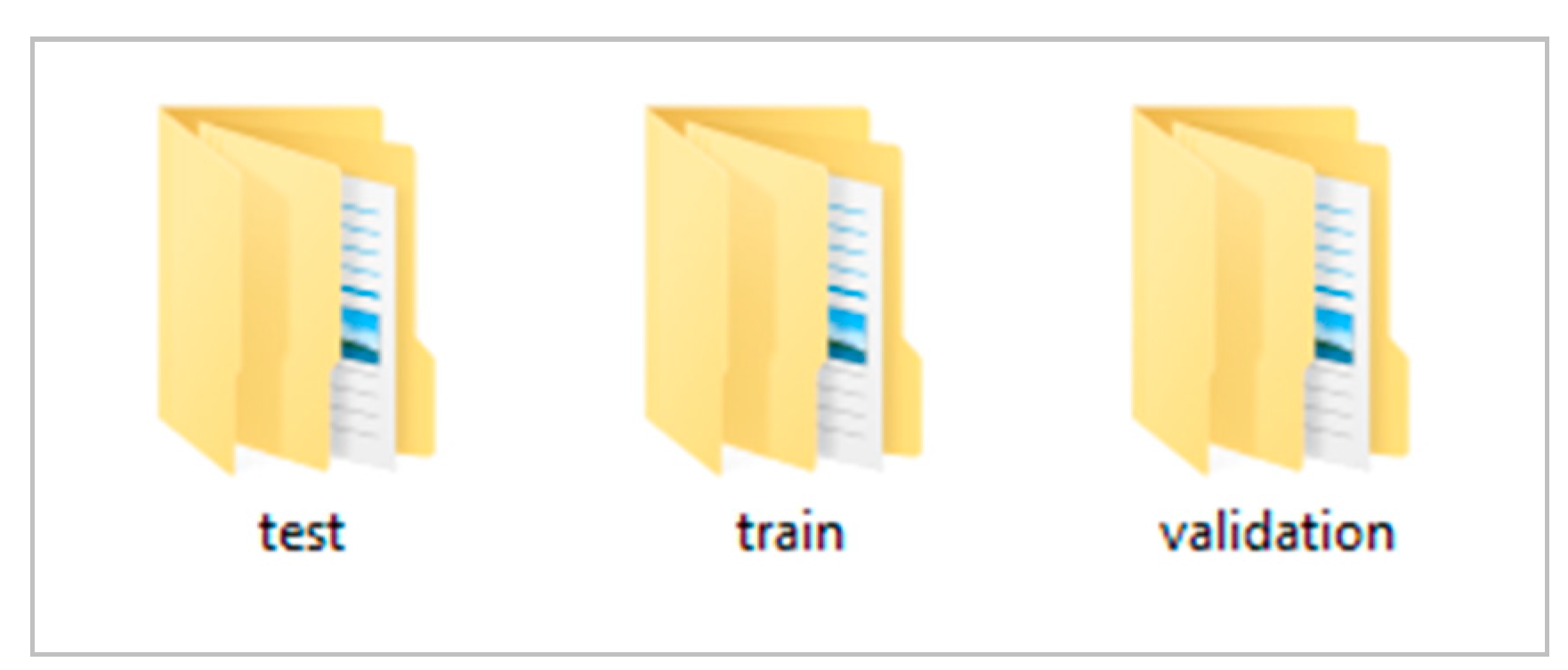




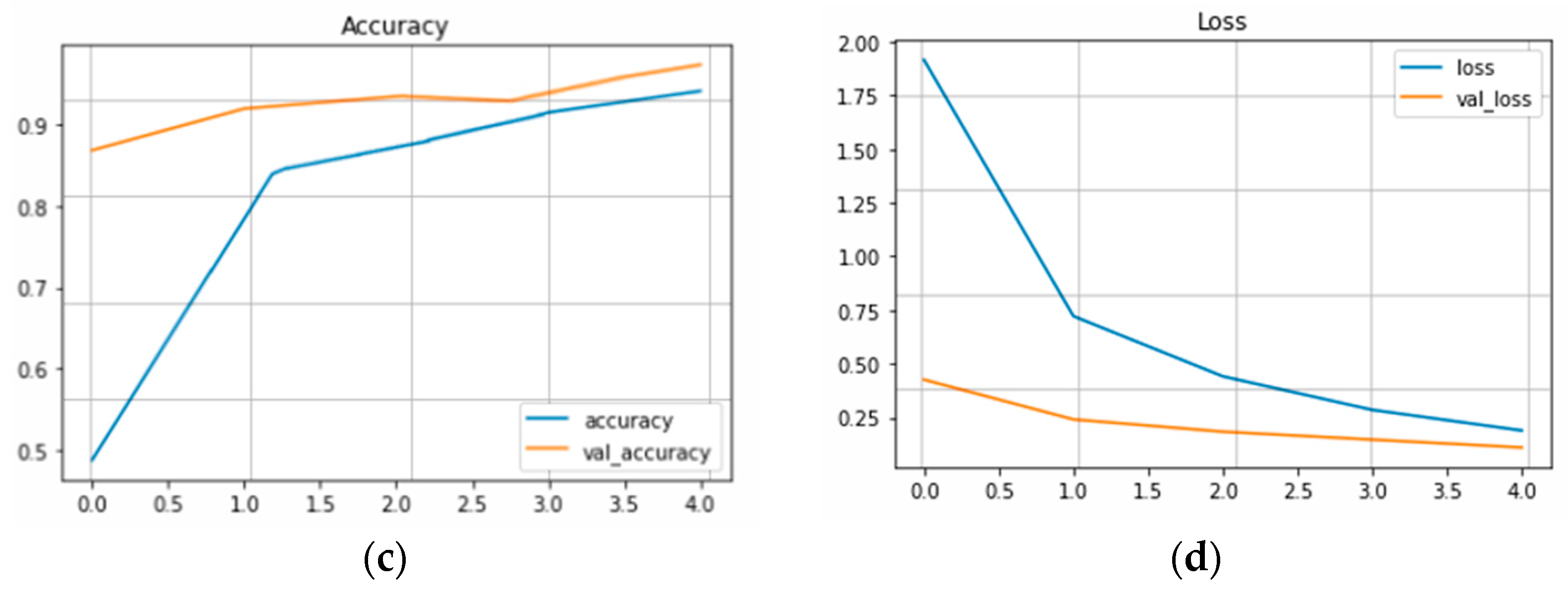




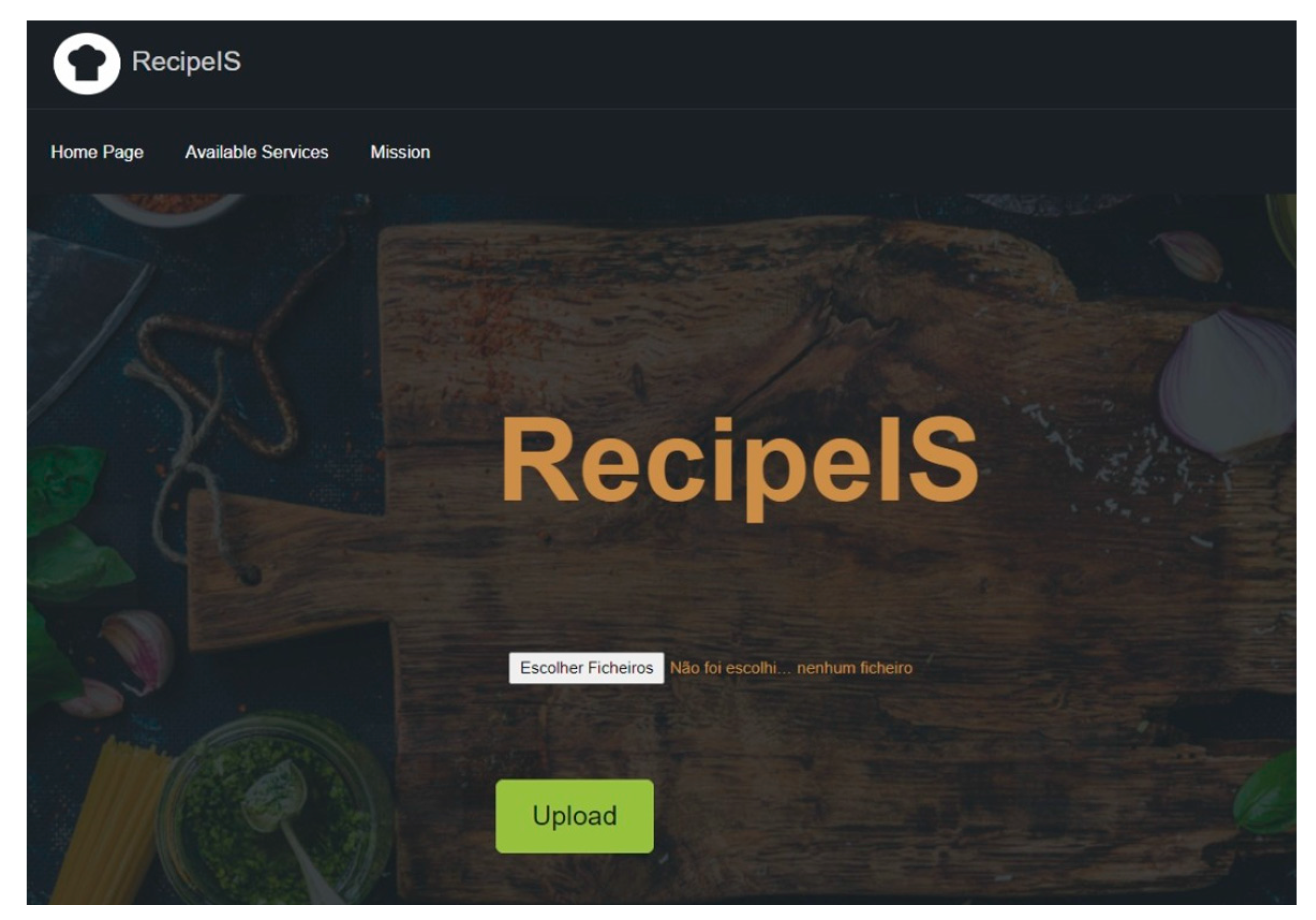

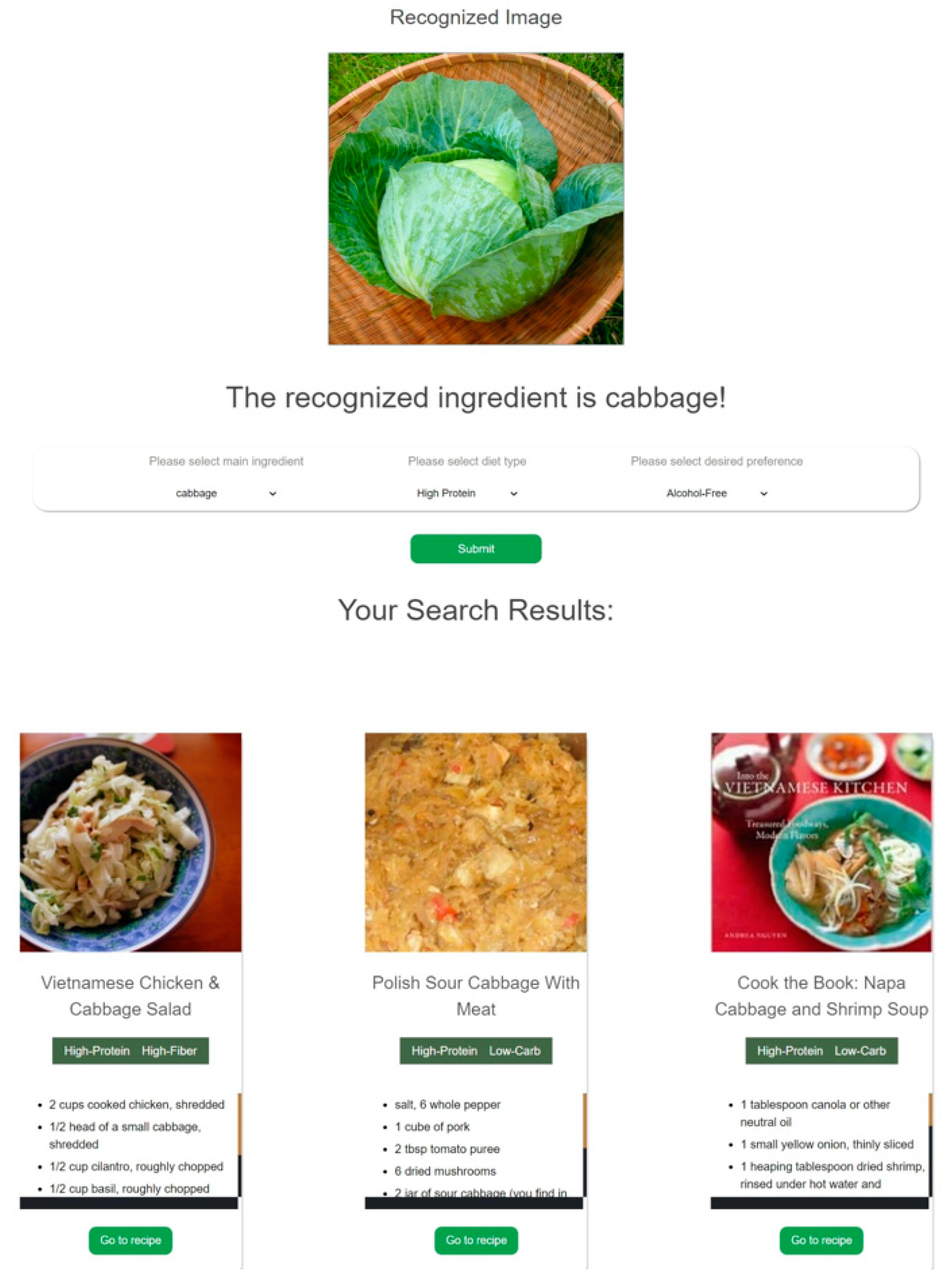
| Study | Model | Description |
|---|---|---|
| [8] | Inception-v3 Inception-v4 | The authors developed a system that exploits the extensive use of mobile devices to provide health information about foods consumed. The application is based on the recognition of a meal, and it presents the ingredients and their nutritional values. |
| [9] | ResNet-50 Inception V3 SENet-154 | The authors developed a system for recognizing ingredients and recipes, focusing on the analysis of some issues such as the recognition at image level of certain ingredients of a recipe, that is, the detection of the ingredients composed by the recognized recipe, and grouping in single or multiple image scaling. |
| [10] | AlexNet CaffeNet ResNet | The authors developed a framework, which they called DeepFood, that extracts effective features from a dataset of ingredient images using Machine Learning, which improves the average accuracy of multiclass classification by applying several advanced machine learning techniques. |
| [11] | MatConvNet | The authors propose the use of neural networks to jointly consider food recognition, recognition of ingredients, and recognition of preparation methods, and verify that the recognition performance can be improved by considering several factors. |
| [12] | ResNet 101 NeuMF | The authors propose a solution for the recognition of multiple ingredients in the supermarket, using the Spatial Regularization Network (SRN) model to solve it. The authors also present a method for personalized recipe recommendation combined with the recognition of multiple ingredients. |
| [13] | ResNet-50 | The authors propose a system for the recognition of a recipe and, from the corresponding image, present the process of cooking the recipe, including the whole process and instructions for preparation and ingredients. |
| [14] | ResNet-50 | The authors analyzed a cross-modal recognition task between cooking recipes and food images and proposed an Adversarial Cross-Modal Embedding (ACME) framework to solve the recognition task in food domains. The main objective was to create an end-to-end ACME framework between cooking recipes and food images. |
| [15] | VGG ResNet DenseNet | The authors propose a Multi-Scale Multi-View Feature Aggregation (MSMVFA) scheme for food recognition that aims to detect and capture ingredients in each recipe. The MSMVFA method utilizes supervised convolutional neural networks (CNNs) to identify each type of ingredient and subsequently fuse them to obtain a more robust and discriminative representation of the recognized recipe. To validate the effectiveness and robustness of the proposed method, the authors implemented three models: VGG, ResNet, and DenseNet. |
| [16] | RESNet-50 SE-ResNet-50 CBAM-ResNet-50 | The authors of the ninth article refer to the difficulties of recognizing recipes or foods through applications. Therefore, in the article, its authors propose a Multi-View Attention Network (MVANet) within a multi-task framework that incorporates several semantic features in the task of food recognition, both in ingredient recognition and in the creation of recipes. The authors also propose a novel Multi-View Attention Fusion (MVAF) that serves to extract and fuse multiple semantic features from different tasks. In terms of implementation, the authors used deep neural networks in the MXNet software, where they implemented all the models for testing, including ResNet-50, E-ResNet-50, CBAM-ResNet-50, and the authors’ model MVANET50. |
| [17] | VGG Arch-D AlexNet | The authors propose architectures for simultaneously recognizing ingredients and performing ingredient recognition and food categorization, exploring the mutual relationship between them. In terms of architecture, the authors performed a modification to the DCNN model, using four different Deep Learning architectures named Arch-A, Arch-B, Arch-C, and Arch-D. These architectures were modified from the 16-layer VGG model. |
| [18] | VGG | The authors developed a mobile application called Pic2Dish, which automatically recognizes the name of the dish and recommends a customized recipe along with instructional videos on how to cook the recipe. For the recognition module, the authors used a convolutional network through the VGG model. |
| [19] | RESTFul | The authors propose a system design and implementation that employs Deep Learning to simplify the cooking task. The system architecture relies on four modules: user-facing interfaces, an image recognition model, a search and recommendation engine, and a dataset. RESTful services are used to implement this architecture. |
| [20] | RESNet-50 | The authors propose a method that estimates the nutritional information from the detection of food ingredients in a given recipe. The authors present a model that estimates the nutritional value through semantic segmentation, extracting a label histogram, which expresses the frequency of occurrence of ingredient text tags based on the results of an image, and then estimating the nutritional value using regression analysis based on the previous information. |
| [21] | Cloud Broker | The authors propose a cloud-based mobile eHealth calorie system that classifies an image of food and further calculates the calories of each food with high accuracy. In this paper, the novelty is that the authors apply an intelligent cloud broker mechanism to efficiently use an instance that is managed in the cloud, which will help for better performance and a better and more efficient response time. |
| [22] | AlexNet | The authors of the article used a convolutional neural network (CNN) for detecting and recognizing food images. They optimized the hyperparameters of the CNN and demonstrated that it significantly improved the accuracy of food recognition compared with a conventional method using a support vector machine (SVM). Through observation of the CNN they produced, the authors found that color features play a dominant role in the food recognition process. |
| [23] | Inception-v3 | The authors present a customized healthy food recommendation scheme, which personalized healthy food recommendation scheme, which they called Market2Dish. An Inception-v3 Net was used to perform the food image capture, reaching an accuracy of 95.5%. In terms of health profiling, the authors propose a supervised neuronal model to trace the health profile of each user by means of the content generated by that same user on social networks. |
Disclaimer/Publisher’s Note: The statements, opinions and data contained in all publications are solely those of the individual author(s) and contributor(s) and not of MDPI and/or the editor(s). MDPI and/or the editor(s) disclaim responsibility for any injury to people or property resulting from any ideas, methods, instructions or products referred to in the content. |
© 2023 by the authors. Licensee MDPI, Basel, Switzerland. This article is an open access article distributed under the terms and conditions of the Creative Commons Attribution (CC BY) license (https://creativecommons.org/licenses/by/4.0/).
Share and Cite
Rodrigues, M.S.; Fidalgo, F.; Oliveira, Â. RecipeIS—Recipe Recommendation System Based on Recognition of Food Ingredients. Appl. Sci. 2023, 13, 7880. https://doi.org/10.3390/app13137880
Rodrigues MS, Fidalgo F, Oliveira Â. RecipeIS—Recipe Recommendation System Based on Recognition of Food Ingredients. Applied Sciences. 2023; 13(13):7880. https://doi.org/10.3390/app13137880
Chicago/Turabian StyleRodrigues, Miguel Simões, Filipe Fidalgo, and Ângela Oliveira. 2023. "RecipeIS—Recipe Recommendation System Based on Recognition of Food Ingredients" Applied Sciences 13, no. 13: 7880. https://doi.org/10.3390/app13137880
APA StyleRodrigues, M. S., Fidalgo, F., & Oliveira, Â. (2023). RecipeIS—Recipe Recommendation System Based on Recognition of Food Ingredients. Applied Sciences, 13(13), 7880. https://doi.org/10.3390/app13137880





